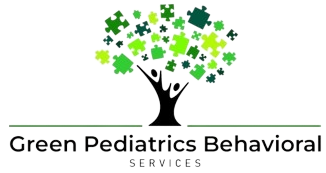
Ensuring that children with Autism have personal Hygiene Skills so that they can develop essential self-care habits is crucial for their overall well-being and confidence. Teaching personal hygiene skills to children with Autism can sometimes pose unique challenges, but with patience, understanding, and the right strategies, it can become a manageable and rewarding process for both parents and caregivers. In this comprehensive blog, we’ll explore techniques to assist children with Autism Personal Hygiene Skills in mastering important self-care routines. Before we dive into the main topic, let’s catch up on some basics relating to the main topic.
Basic Understanding of Autism

Before diving into teaching children with Autism personal hygiene skills, it’s important to have a basic understanding of autism yourself. Autism, or autism spectrum disorder (ASD), is a developmental disorder characterized by challenges with social skills, repetitive behaviours, speech, and nonverbal communication. It’s essential to recognize that each child with autism is unique, with their strengths and areas of difficulty.
Why Is Personal Hygiene Important for Children With Autism?
For children with autism, personal hygiene is very important. It includes several aspects that are vital to their health and socialization. First of all, making sure they show themselves in a way that conforms to social norms, promotes social acceptance, which can boost their confidence and enable more easily with peers.
Maintaining their physical health and lowering their risk of illnesses and infections requires them to practice excellent hygiene practices like taking regular baths, taking care of their teeth, and washing their hands frequently. Since many autistic children have sensory sensitivity issues, it can be helpful to gradually introduce and acquaint them with the various sensations related to grooming tasks in order to reduce discomfort and resistance.
Additionally, establishing consistent hygiene routines provides structure and predictability, which are essential for individuals with autism to navigate their daily lives more effectively. Through the acquisition of self-care skills, children with autism can develop a sense of independence, empowering them to take charge of their well-being as they grow.
Addressing any behavioural challenges linked to hygiene practices can contribute to a more harmonious and supportive environment, ensuring that these children receive the understanding and assistance they need to thrive. Overall, prioritizing personal hygiene in children with autism not only promotes their physical health but also plays a vital role in nurturing their social, emotional, and cognitive development, enhancing their overall quality of life.
Creating a Supportive Environment
Establishing a supportive environment is key to the successful teaching of personal hygiene skills to children with autism. Create a safe and comfortable space where the child feels secure and relaxed. Minimize distractions and sensory triggers that may overwhelm them. Use visual supports such as schedules, social stories, or picture cards to help them understand expectations and routines.
Understanding Personal Hygiene
Before teaching specific hygiene skills, it’s important to break down the concept of personal hygiene into simple terms that children with autism can understand. Explain that personal hygiene means taking care of our bodies to stay clean and healthy. Use concrete examples and visual aids to illustrate different aspects of personal hygiene, such as washing hands, brushing teeth, and bathing.
- Step 1: Establish Routine: Consistency is key when teaching personal hygiene skills to children with autism. Establish a predictable routine for hygiene activities, such as brushing teeth in the morning and before bed, washing hands before meals, and taking a bath/shower at a specific time each day. Consistent routines provide structure and predictability, which can help reduce anxiety and resistance to hygiene tasks.
- Step 2: Break Down Tasks: Break down each hygiene task into smaller, manageable steps to make them easier for the child to understand and accomplish. For example, instead of saying, ”Take a shower,” break it down into steps like ”Turn on the water,”,” Use soap to wash,”,” Rinse off,” and ”Dry with a towel.” Breaking tasks down into smaller steps helps prevent overwhelm and allows the child to focus on one step at a time.
- Step 3: Use Visual Supports: Visual supports are invaluable tools for teaching personal hygiene skills to children with autism. Use visual schedules, picture cards, or social stories to visually represent hygiene routines and expectations. Visual supports provide clear, concrete blocks that help children understand what is expected of them and can reduce anxiety by making tasks more predictable.
- Step 4: Model and Practice: Modelling proper hygiene techniques is an effective way to teach children with autism personal hygiene skills. Demonstrate each hygiene task yourself, narrating each step aloud as you go. Then, encourage the child to imitate your actions and praise their efforts. Provide plenty of practice opportunities, offering guidance and support as needed.
- Step 5: Reinforce Positive Behavior: Positive reinforcement is essential for encouraging children with autism to engage in personal hygiene activities. Praise the child for their efforts and accomplishments, no matter how small. Use rewards such as stickers, tokens, or preferred activities to motivate them to participate in hygiene tasks. Positive reinforcement helps build confidence and reinforces the importance of good hygiene habits.
- Step 6: Be Patient and Flexible: Patience and flexibility are key when teaching personal hygiene skills to children with autism. Understand that progress may be slow and may require repeated practice and reinforcement. Be patient with setbacks and challenges, and be willing to adapt your approach based on the individual needs and preferences of the child.
Conclusion
Teaching children with autism personal hygiene skills requires patience, understanding, and a willingness to adapt. By establishing routines, breaking down tasks, using visual supports, modelling and practising, reinforcing positive behaviour, and being patient and flexible, parents and caregivers can help children with autism develop essential self-care habits that promote their health and well-being. With time and persistence, children with autism can learn to independently manage their hygiene, empowering them to lead healthier and more confident lives.
